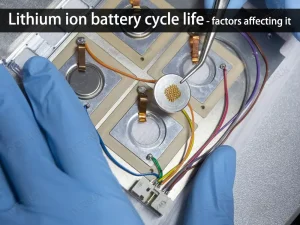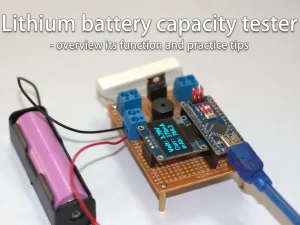LiDFP additives help enable 4.8 V ultra-high voltage lithium batteries

Introduction of ultra-high voltage
In the question of which battery has the most voltage, we found among many positive candidates for batteries, the Ni-rich layered material LiNixMnyCo1-x-yO2 (NMC) exhibits high theoretical capacity (~280 mAh g-1), ultra-high voltage (~4 V vs. Li+/Li), and lower cost The advantages.
Among them, the dissolution of transition metal (TM) leads to capacity fading, and the dissolved TM migrates through the electrolyte and finally deposits on the anode surface, which changes the surface composition and structure of the cathode and destroys the solid electrolyte interface (SEI) on the anode.
Despite the varying degrees of success of various approaches such as surface protection, bulk doping, and microstructural engineering, it is still very challenging to obtain stable cycling of Ni-rich layered cathodes at ultra-high voltage (>4.5 V).
Commercial ethylene carbonate and methyl ethyl carbonate (EC/EMC) electrolytes can only maintain stability at about 4.3 V in practical batteries, and at ultra-high voltage above 4.3 V, oxygen molecules and oxygen radicals can delithiate from lithium The surface of the positive electrode is released and reacts with the electrolyte.
The use of sacrificial additives is an effective approach to enhance electrochemical performance under ultra-high voltage operating conditions, where a highly protective cathode-electrolyte interface (CEI) can suppress electrolyte decomposition and minimize cathode degradation.
However, under ultra-high voltage operation (>4.6 V), it is difficult to identify additives that can simultaneously address multiple challenges.
Ultra-high voltage protective additives
A lithium difluorophosphate (LiDFP) as a ultra-high voltage protective additive for a common commercial electrolyte, LiNixMnyCo1-x-yO2 (NMC), can achieve stable cycling with an ultra-high voltage of 4.8 V.
The Li||LiNi0.76Mn0.14Co0.10O2 battery has an initial capacity of 235 mAh g-1 and can still maintain 97% of the initial capacity after 200 cycles. Through a combination of theoretical calculations and experiments, it is found that the cycling stability is attributed to the stable interface on the cathode.
It is formed by the decomposition of LiDFP, and the catalysis of transition metal (TM) promotes the decomposition, while the decomposition products (Li3PO4 and LiF) form a protective interface, which also inhibits the dissolution of transition metal and the reconfiguration of the cathode surface. In addition, it promotes the uniform distribution of Li within the cathode, effectively alleviating the strain and crack formation.
Innovation
1. Using LiDFP as a ultra-high voltage protective additive for common commercial electrolyte NMC, a stable cycling with ultra-high voltage of 4.8 V was achieved.
2.The Li||LiNi0.76Mn0.14Co0.10O2 battery has an initial capacity of 235 mAh g-1 and can still maintain 97% of the initial capacity after 200 cycles.
Data overview
Electrochemical performance of Li||NMC76 batteries using different electrolytes at ultra-high voltage pressure
(a) Charge-discharge curves for selected cycles within 2.8–4.8 V ultra-high voltage.
(b) EIS results of Li||NMC76 after 200 cycles with different electrolytes;
(c) Equivalent circuit modeled by EIS;
(d) EIS fitting results of Li||NMC76 battery exposed to different electrolytes for 200 times.
CEI XPS Characterization and LiDFP Additive Decomposition Mechanism
(a) XPS spectra of NMC76 electrode with baseline and additive electrolyte after 200 cycles between 2.8 V and 4.8 V ultra-high voltage;
(b) The proposed decomposition mechanism of the LiDFP-containing electrolyte.
HAADF-STEM and soft XAS signatures of cycled NMC76 cathodes
(a) HAADF-STEM images of NMC76 particles cycled between 2.8 V and ultra-high voltage 4.8 V with different electrolytes;
(b) Characterization of the cathode surface by the total electron yield mode of soft XAS: Mn L3 edge, Co L3 edge and Ni L3 edge.
Electrode-scale quantification of TM deposited on Li anode
(a) XRF mapping of Li anode;
(b) Average deposited TM mass per unit area for the three TMs;
(c) TM oxidation state changes at different positions using baseline and 1% LiDFP electrolyte.
Electrode-level characterization of chemical-mechanical interactions in electrolytes with and without LiDFP additives
(a) 3D rendering of the composite electrode from the cell with baseline electrolyte;
(b) Extract particle volume and sphericity and compare;
(c) The anisotropic polarization behavior of all particles is plotted as a function of their corresponding SOC changes;
(d) The centroids of contours for different particle groups with and without LiDFP additive are plotted.
X-ray Diffraction and Tomography Analysis of Cyclic NMC76 Cathode
(a) X-ray diffraction patterns of pristine NMC76 and NMC76 after 200 cycles between 2.8 V and ultra-high voltage 4.8 V using baseline and baseline plus 1% LiDFP additive electrolyte;
(b) Lattice parameters of NMC76 calculated by X-ray diffraction fitting;
(c) X-ray tomography results of NMC76 particles after 200 cycles between 2.8 V and ultra-high voltage 4.8 V using additive-containing electrolyte and baseline electrolyte;
(d) Relative frequencies of porosity values for all extracted particles under both conditions;
(e) Pie plot showing the percentage of particles at different porosity levels.
Summary
When cycled between 2.8 V and 4.8 V ultra-high voltage, the polycrystalline NMC76 cathode can deliver an initial capacity of up to 235 mAh g-1 with 97% capacity retention after 200 cycles if 1% LiDFP is used.
The surface-catalyzed decomposition of LiDFP on Ni-rich NMC promotes the formation of a protective CEI composed of Li3PO4 and LiF. Thus, LiDFP has multiple functions, including inhibiting surface reconstruction, mitigating TM dissolution, and contributing chemical components to form conductive interfaces.
Machine-learning-assisted tomographic isometric characterization at the electrode level revealed that those small-sized and spherical particles are very sensitive to LiDFP additives. Due to the faster transport of Li ions through the better interface formed by LiDFP, a more uniform Li distribution within the bulk particles is regulated, reducing strain and consequent crack formation.
The authors also show that Ni undergoes the most severe dissolution in the three TMs, and future development of NMC or other layered structured materials can focus on stabilizing Ni as well as homogenizing the particle morphology through the use of new additives.
For the cathode materials and anode materials mentioned in the article, relevant information can be found here from Top 10 anode material manufacturers in China and Top 10 lithium ion battery electrolyte company in China.































